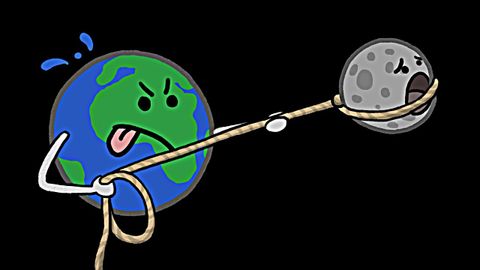なぜ月の片側しか見えないのか? (Why Do We Only See One Side of the Moon?)
cathy~ が 2015 年 10 月 29 日 に投稿  この条件に一致する単語はありません
この条件に一致する単語はありません- v.t./i.去る;残す : (財産などを)残して死ぬ;(ものを)~の状態にしておく;(使用せず)そのままにしておく;残す;~の状態にする
- n. (u.)許可;休暇(期間)
- n. (c./u.)残り物
- v.t.(道路を)舗装する : 新しい表面につくりかえる
- v.i.浮上する;浮上する;表面に浮上する
- adj.表面の
- n. (c./u.)表面 : 面 : 水面;うわべ : 見かけ : 外観;表面
- n. (c./u.)絞り汁;絞ること;窮屈;強く圧力をかけること
- v.t.脅迫する、圧力をかける;搾る;押して圧力をかける;絞る
- v.t./i.人が詰め込む
- v.i.~の側につく : ~に味方する : ~を支持する
- n.(意見 : 立場などの)一方 : ~側 : ~派;(左右の)体側;(性格の)側面 : 様相;(物体の)側面 : わき;(スポーツなどの)組 : チーム : サイド
- adj.副次的な : 付随する;そばの : わきの : 横の
エネルギーを使用
すべての単語を解除
発音・解説・フィルター機能を解除
